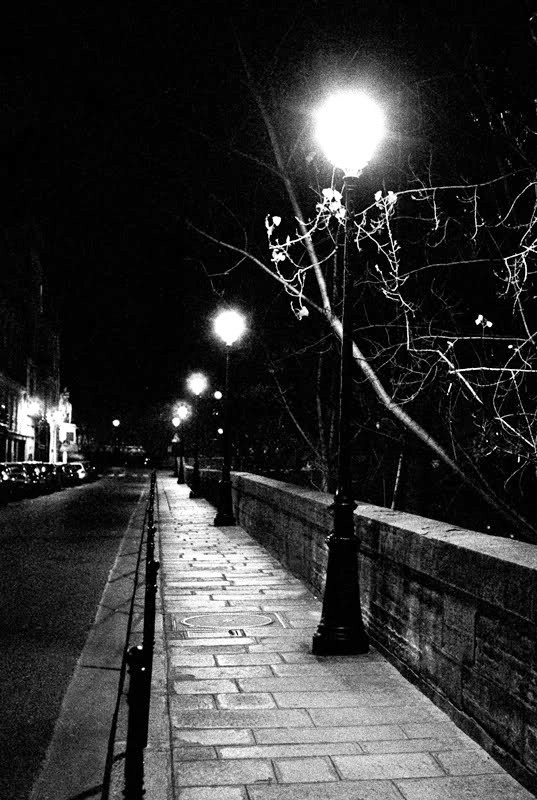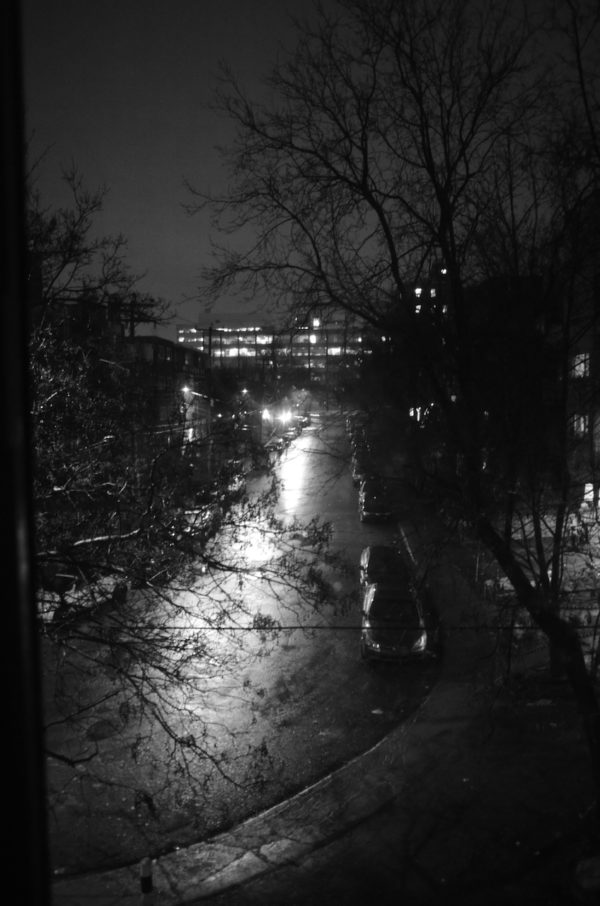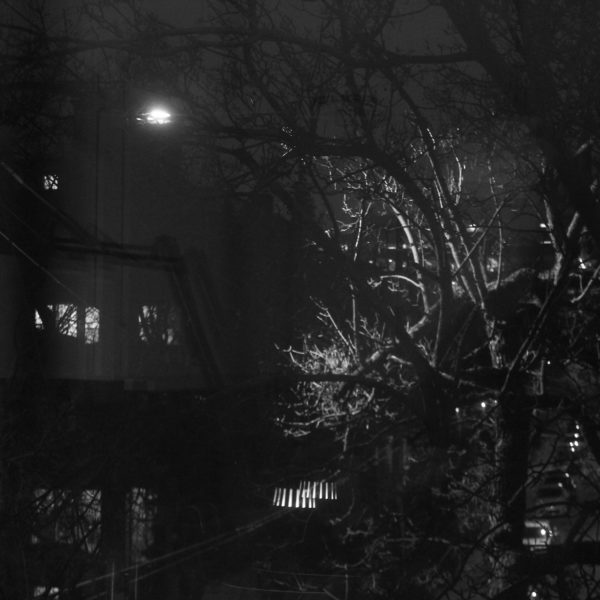In the company of Lyonel Feininger and Brassai
Lyonel Feininger was a painter, working between the two world wars, who was on the faculty of the Bauhaus, in Dessau, at the time he began his exploration of artistic photography, as derivative activity from his mainstay painting ones.
He kept that activity mostly at night given his interest in abstracting the effects of light sources he treated as miniature sun, as shown in the feature image.
Brassai was a photographer and film maker, also working between the two world wars, who was interested in documenting the appearance of Paris at night, as well as of its night life.
He had a very practical approach to technical matters such as measuring exposure time according to how long it took him to smoke a certain cigarette!
An artist and photo journalist of sorts … (See image below)

In my only post on Cultural Weekly dealing with night photography, I compared daylight and night time images of the same subject, touching on their visual and social dimensions. See https://www.culturalweekly.com/different-as-day-and-night/
From lit spaces to night places
What the photography of lit spaces allows us to do is not only to look at the light sources that illuminate them, but also at how their light modulating characteristics come to qualify their visual and social dimensions as night places.
It is those effects that I sought to approximate in my own night photographs presented here, the point of view and subject of which being determined by my confinement situation.
The river of asphalt …
… or is it an Amsterdam-like canal at night with motor boats moored on each side?

The level of that illusive canal water being at practically the same as the one of the bordering sidewalk, that illusion fast disappears leaving us to ponder the nature of that most delicate white foam-like line that is only a reflection of a street light off the accumulated rain water against the curved sidewalk edge.
City lights at night, not being as all-encompassing as daylight, our eye goes from bright spot to bright spot, interpreting its source and leaving to imagination the mystery of unlit areas.
Light washed building entrance …
… viewed from my second-floor window at night, it is accompanied, in the image below, by the perpendicular reflection of the computer keyboard on my nearby work table.

In the process of one’s interpretation of night light sources, and their concurrent dark area, the visual sense is fast replaced by our imagination and by what we know and expect of the places they come to characterize and define.
The entrance to this apartment building is, in that perspective, the sheltered approach to the door, having passed the transition of decorative summer planters, and aiming for the comfort of a warm lobby and an indoor carpeted floor, all of which can be seen through my camera viewfinder and interpreted by my mind’s eye.
Street light vs desk light

A mini moon, up above lit windows, shines its light unto the bare top tree branches, while the reflection of the Luxo light located behind me at my work table seems to be floating near the lower tree branches.
This image is a bit like the latter photographs by Feininger, that go a certain distance to have a scene depicted, and not just to be a formal play of suggestive light patterns.
End words
Inspired by the caleidoscopic painterly vision of Feininger and the technical wizardry of Brassai, I used the spatial limitations of my point of view and the environmental context of my subjects to fuel this exercise.
As our cool spring turns into warmer early summer I expect to explore the same theme at street level, if allowed by the official policy of confinement of senior citizens.
Bibliographic note
Muir, Laura: Lyonel Feininger Photographs, 1928-1939. Harvard Art Museums, 2011
Brassai, George: Paris de nuit, Flammarion, Paris, 1987
Credits
“Black ice” feature image by Lyonel Feininger and “Street light” image by Brassai, courtesy of the web sites of bing.com/images
Credit all other photographs to Maurice Amiel
